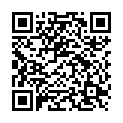|
|
|
| Module code: PIBWI91 |
|
|
4V (4 hours per week) |
|
5 |
| Semester: 5 |
| Mandatory course: no |
Language of instruction:
German |
Assessment:
Case studies/Project collection
[updated 19.02.2018]
|
KI637 Computer Science and Communication Systems, Bachelor, ASPO 01.10.2014
, semester 5, optional course, technical
KIB-MSAA Computer Science and Communication Systems, Bachelor, ASPO 01.10.2021
, semester 5, optional course, technical
KIB-MSAA Computer Science and Communication Systems, Bachelor, ASPO 01.10.2022
, semester 5, optional course, technical
PIBWI91 (P221-0117) Applied Informatics, Bachelor, ASPO 01.10.2011
, semester 5, optional course, informatics specific
PIB-MSAA Applied Informatics, Bachelor, ASPO 01.10.2022
, semester 5, optional course, informatics specific
PIB-MSAA Applied Informatics, Bachelor, SO 01.10.2026
, semester 5, optional course, informatics specific
|
60 class hours (= 45 clock hours) over a 15-week period.
The total student study time is 150 hours (equivalent to 5 ECTS credits).
There are therefore 105 hours available for class preparation and follow-up work and exam preparation.
|
Recommended prerequisites (modules):
None.
|
Recommended as prerequisite for:
|
Module coordinator:
Prof. Dr. Barbara Grabowski |
Lecturer: Prof. Dr. Barbara Grabowski
[updated 26.07.2009]
|
Lab:
Applied Mathematics, Statistics, and eLearning (5306)
|
Learning outcomes:
After successfully completing this module, students will be familiar with typical mathematical software, know its advantages and disadvantages, can classify it according to type and application areas and can develop solution algorithms for simpler problems and implement them in a suitable language. They will be able to differentiate between computer algebra systems, numerical systems, statistical software, graphical systems and logical programming languages. They will be familiar with the problems of rounding errors and error propagation and know how to control such errors.
Furthermore, they will be able to manipulate and analyze mathematical terms with the typical data and control structures of computer algebraic systems (CAS) and implement algorithms for symbolic term transformations.
[updated 19.02.2018]
|
Module content:
1. Problems of rounding errors, error propagation
2. Classification of common math software systems
2.1. Numerical packages
(classification, computation accuracy, rounding problems,
error propagation, typical examples)
2.2. Computer algebraic systems
(classification, exact computations, symbolic computation, runtime problems, typical examples)
2.3. Other software
(graphical CAS, statistics packages, software for TR, typical examples)
2.4. Declarative languages
(description of the problem and not the solution algorithm, typical examples)
3. CAS
3.1. General elementary concepts of computer algebra
3.2. Recursive structure of mathematical expressions
3.3. Elementary mathematical algorithms, case study
3.4. Recursive mathematical algorithms, case study
3.5. Polynomials, exponential and trigonometric transformations, case study
4. Solving problems with mathematics software
4.1 SPSS
4.1.1 Introduction to SPSS
4.1.2 Case studies: Data mining methods Cluster analysis and exploratory data analysis with SPSS
4.2 MAPLE
4.2.1. Introduction, data structures, control structures, MAPLE programming environment
4.2.2 Case studies: Sorting and search methods,
solving equation systems,
route planning, graph theory and coding
4.3 MatLab
4.3.1. Introduction, data structures, control structures, MatLab development environment
4.3.2 Case studies: Numerical methods for interpolation and approximation
5. Introduction to PROLOG
5.1. Structure: clauses, facts and rules
5.2. The backtracking algorithm
5.3. Lists and recursion in PROLOG
5.4. Creating your own CAS in PROLOG
[updated 19.02.2018]
|
Teaching methods/Media:
100% of the lecture will take place in the PC lab "Angewandte Mathematik, Statistik und eLearning". All of the practical exercises for the lecture, as well as solving exercises, homework and case studies will be done with the e-learning system MathCoach, CAS systems, statistics and mathematics software (AMSEL lab: PC lab: "Angewandte Mathematik, Statistik und eLearning").
[updated 24.02.2018]
|
Recommended or required reading:
Joel S. Cohen, Computer Algebra and Symbolic Computation, Bd1: elemtary algorithms, A.K.Peters Ldt., 2002
BRANDSTÄDT A., Graphen und Algorithmen, B.G.Teubner Stuttgart, 1994
[updated 19.02.2018]
|
Module offered in:
WS 2016/17,
WS 2015/16,
WS 2014/15,
WS 2012/13,
WS 2011/12,
...
|


